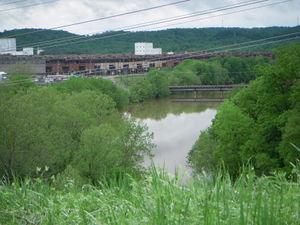Both the Oak Ridge and Hanford sites were chosen for their isolation and access to hydropower from surrounding river systems. Yet their location left lasting impacts on the water ecosystems the production plants needed to be effective.
Oak Ridge and the Clinch River
The Manhattan Project site at Oak Ridge was selected, in large part, for its proximity to the Clinch River, a 300-mile river that flows southwest through the Great Appalachian Valley, eventually joining the Tennessee River. The site was also in the direct service area of the Tennessee Valley Authority, which offered the enormous amounts of electrical power that scientists and engineers were predicting would be required to process raw uranium ore and turn it into weapons-grade material that could be used in an atomic bomb. The production facilities at Oak Ridge were massive structures, often the size of multiple city blocks, connected by mazes of piping and electrical lines to the smaller support buildings scattered around the site. Though Manhattan Engineer District engineers made serious efforts to ensure the safety of plant workers, many of the factories were dangerous and included daily contact with hazardous chemicals and radioactive elements. Containing these radioactive materials and properly disposing chemical wastes also proved to be a challenge, as some inevitably leaked from the K-25 gaseous diffusion plant and the Y-12 chemical separations plant into the surrounding groundwater and ultimately into the Clinch River.
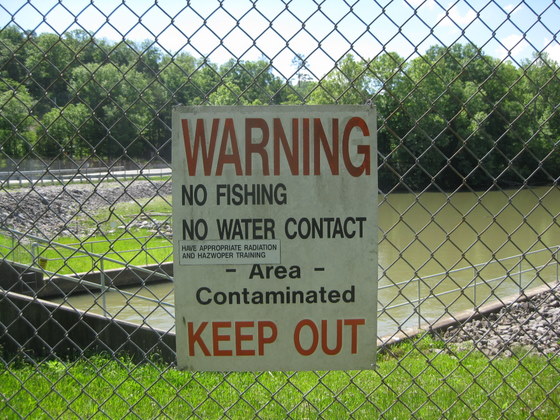 In June 1944, evidence surfaced of potentially dangerous levels of radioactivity in the mud and water at White Oak Creek and White Oak Lake located near the K-25 Plant. District officials notified the Medical Section to investigate and determine the danger involved. Over the next few months, scientists tested the water and mud radioactivity and analyzed the amount of contaminants present in a small sample of fish taken from the lake. In October, Dr. Stafford Warren, director of the Medical Section, reported that the dangers to fish, to workers on the river, and to people drinking the water and eating the fish was minimal. Nonetheless, the discovery of effluent material in the lake motivated the Medical Section to propose a program to monitor radiation levels at the sites and enact necessary measures to ensure levels did not worsen. Since scientists could not determine the source of White Oak’s radioactivity, the plants at Oak Ridge continued with normal operations.
In June 1944, evidence surfaced of potentially dangerous levels of radioactivity in the mud and water at White Oak Creek and White Oak Lake located near the K-25 Plant. District officials notified the Medical Section to investigate and determine the danger involved. Over the next few months, scientists tested the water and mud radioactivity and analyzed the amount of contaminants present in a small sample of fish taken from the lake. In October, Dr. Stafford Warren, director of the Medical Section, reported that the dangers to fish, to workers on the river, and to people drinking the water and eating the fish was minimal. Nonetheless, the discovery of effluent material in the lake motivated the Medical Section to propose a program to monitor radiation levels at the sites and enact necessary measures to ensure levels did not worsen. Since scientists could not determine the source of White Oak’s radioactivity, the plants at Oak Ridge continued with normal operations.
Much of what we know about radioactive contamination around the Oak Ridge site emerged only recently. In 1983, documents disclosing the discharge of “2.4 million pounds of mercury from the Y-12 Nuclear Weapons Components Plant at Oak Ridge” were released to the public. In 1987, the Department of Energy found that polychlorinated biphenyls (PCBs), heavy metals, and radioactive materials all were present in groundwater samples beneath the Y-12 plant. A year later, the DOE also reported that toxic and radioactive wastes from X-10 and the K-25 gaseous diffusion plant had in fact drained into White Oak Creek. In addition, the K-25 plant had spread radioactive particles and gases into the surrounding environment between its start up in 1945 and its closure in 1964. Later studies revealed that traces of plutonium were found almost forty miles downstream from the Oak Ridge site. While the quantities of radioactive materials and toxic chemicals found were relatively small, it raised disturbing questions about the slow migration of long-lived contamination from the aging atomic complex.
Hanford and the Columbia River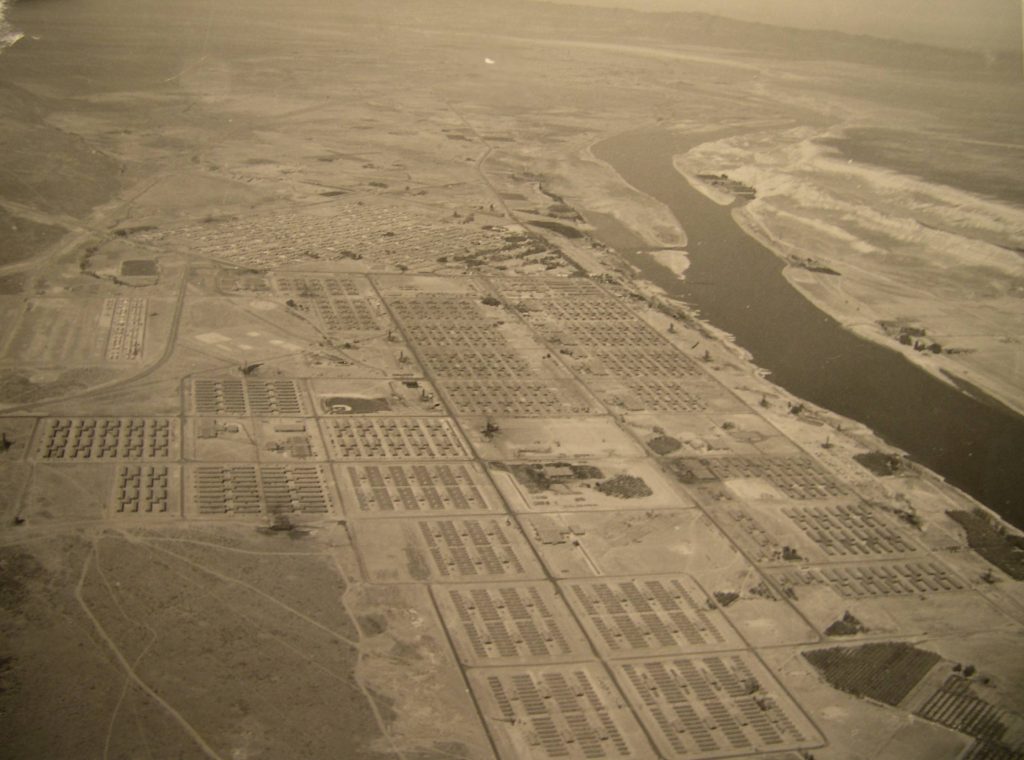
One of the main reasons Hanford was selected as a site for the Manhattan Project’s B Reactor was its proximity to the Columbia River, the largest river flowing into the Pacific Ocean from the North American coast. Nearly 1,200 miles long, the Columbia drains some 259,000 square miles and provided an abundant source of water for many of the chemical separations plants at the site and played a crucial role in cooling the reactor during operation. The facilities at Hanford were linked together by a complex maze of pipes that carried water and effluent to different areas around the site. Many portions of the plutonium production process yielded highly toxic and radioactive waste. While District engineers made an effort to treat and contain the radioactive effluent, some of this material ended up back in the Columbia River. This had a significant effect on the surrounding environment and wildlife in the area. As a result, General Leslie Groves established a number of scientific programs tasked with understanding and limiting radioactive contamination in general and damage to fish in the Columbia River.
Water Treatment
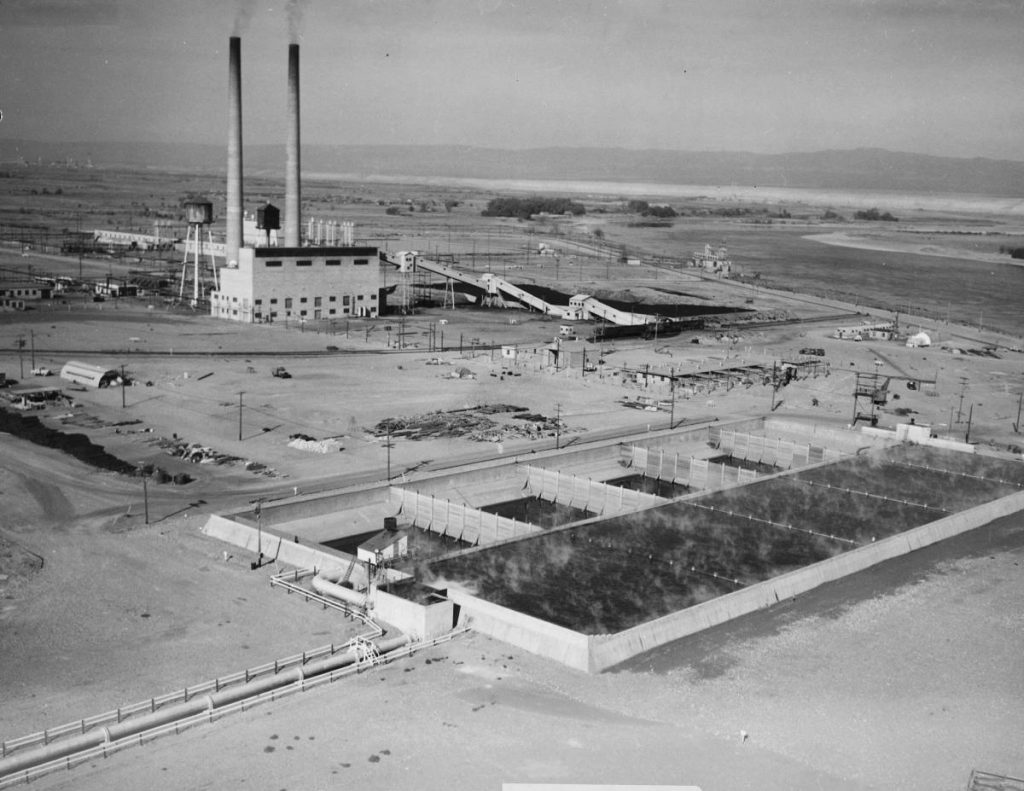
The water treatment process at Hanford involved a series of stages in which water was pumped from the Columbia River, held in reservoirs, filtered, demineralized, deaerated, cooled, and refined so that it might enter the pile and cool the reaction process. A “flow circuit” system was developed where water would stream through the reactors before flowing back to the Columbia River. Nearly all of the attention in the complex process lay with stages from river to pile–where, in other words, the quality of the water reflected on the industrial output of plutonium. Afterward, however, the effluent water was simply pumped into a 7,200,000-gallon retention basin where it sat while the radioactive materials with the shortest half-lives emitted their radiation until it was determined that it could be pumped back into the Columbia River.
At the time of the Manhattan Project, there was no real knowledge as to what constituted safe or unsafe dilutions of the particular toxic materials that came out of the reactor. Scientists also had very little understanding of the short and long-term effects of radioactivity on humans, wildlife, and the environment. There had been some scientific studies of effluent containing heavy metals, such as lead or arsenic, but very little research surrounding uranium and other radioactive substances. As a result, the system of standards for waste disposal and water treatment was relatively low.
Medical Hazards
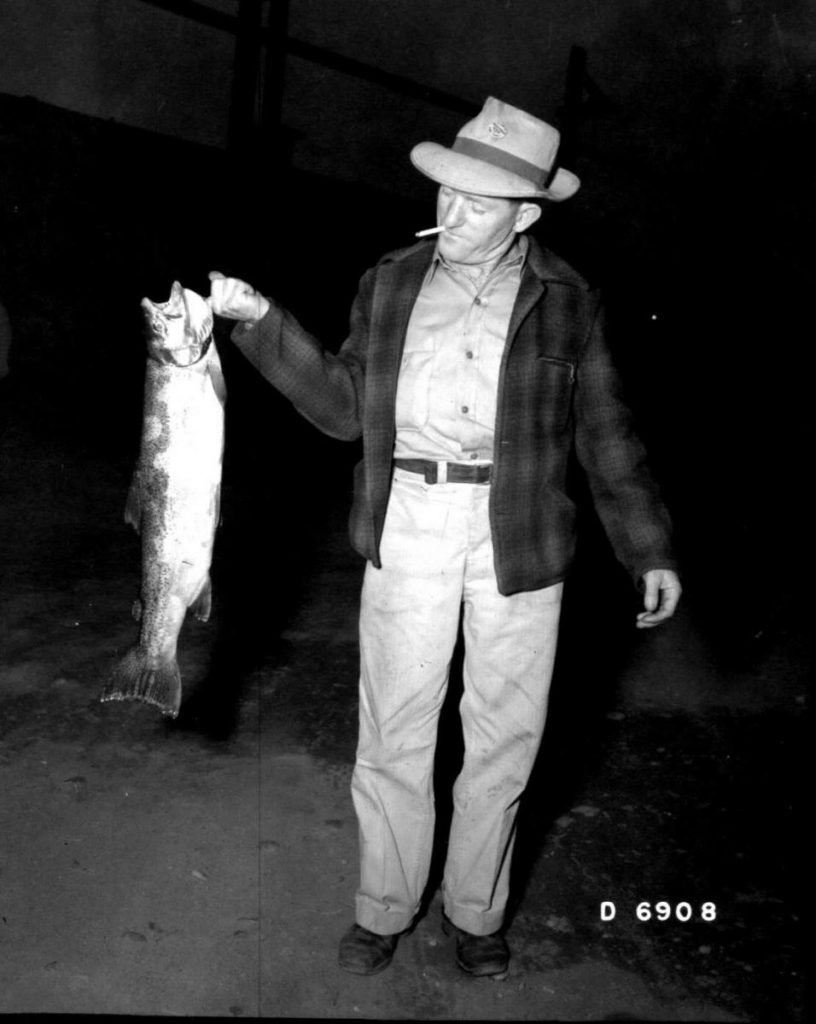
As far as medical hazards to workers on the sites themselves, Manhattan Project officials had developed a minimum set of standards, requiring most workers to wear radiation meters and to take time off when doses became too high. However, radioactive materials inevitably spread to other areas surrounding Manhattan Project sites. In Hanford, much of the radioactive waste was carried away by the Columbia River or by the prevailing winds and spread to areas downstream. It did not take very long for residents nearby to notice that something had contaminated the water and the wildlife. The largest groups affected by the spread of radioactive materials were the Yakimas and the Nez Perce, two Native American tribes who depended on the Columbia River for its natural resources and its abundant fish. Soon after B Reactor became operational, District officials began receiving reports from tribe members that the fish in the River could be seen “glowing” at night.
When these reports made its way up the chain of command, Project Director General Leslie Groves and Site Supervisor Lieutenant Colonel Franklin Matthias were faced with a range of options. They could engage a program to investigate the dangers of radioactive waste to human life and to the ecosystem more generally in the immediate and long term. From this they could determine what would be needed to treat the water and how long it would need to be stored before it could be returned to the Columbia. However, if the investigation process took longer than the initial startup, plutonium production would have to be put on hold. And if scientific research revealed that decontamination was beyond current technological abilities, the plutonium production program would have to be shut down entirely. This option seemed unlikely; the United States was in the middle of a war and the Manhattan Project mandated that an atomic bomb be built as soon as possible. Officials would have to decide just how much damage to the Columbia River ecosystem could be tolerated in the name of war.
As a result, Groves and Matthias chose to do nothing. There was no evidence to suggest that a scientific study could quickly or effectively determine the nature and extent of the risks of radioactive waste on humans or the environment–or if it ever could. Construction on the retention basins that had not yet been completed continued and plutonium production resumed. The priority became clear: delay or cancellation of the program was unacceptable.
Radiation Studies
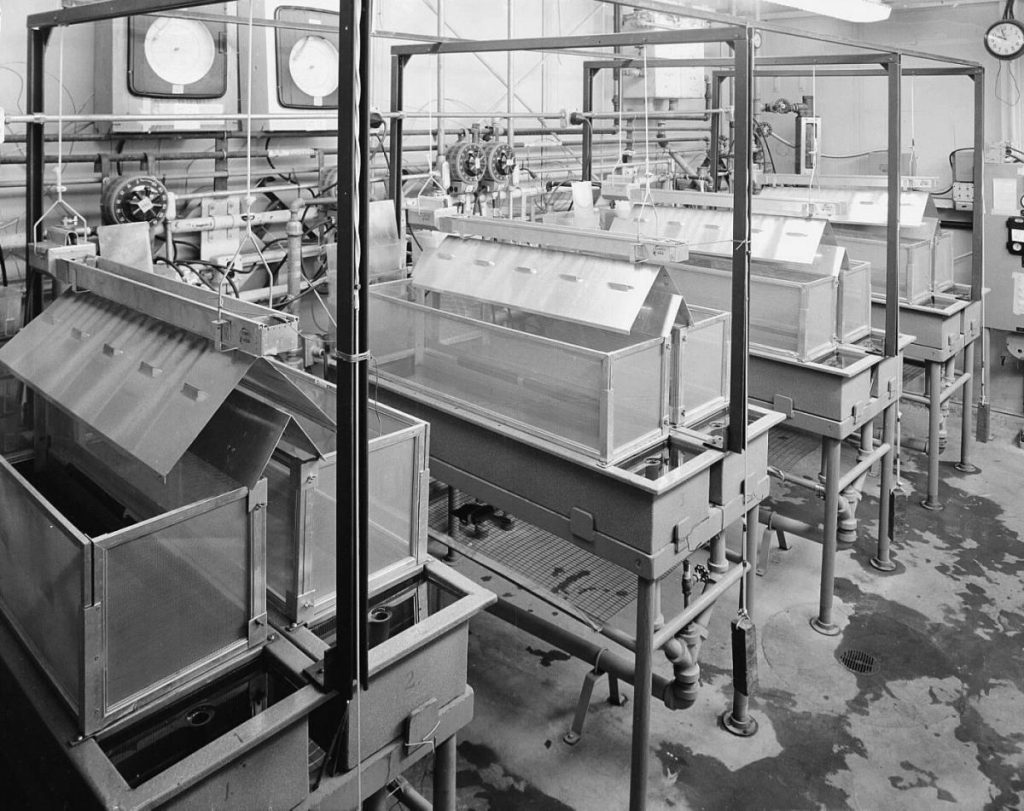
Groves would, however, initiate a program to study the effects of water contamination, especially on aquatic life and fish. He wanted to provide the appearance at least of scientific programs to understand and limit contamination in general and to prevent damage to the salmon crop especially. But the programs to investigate the effects of radiation on fish were small, pilot studies that were unlikely to provide evidence that might threaten Manhattan Project operations until long after production was underway.
Much of what we know today regarding radiation and its effects on humans and the environment is a direct result of efforts undertaken during the Manhattan Project and immediately thereafter to understand the mysterious side effects that resulted from dangerous levels of exposure to radioactive materials. While the scientific programs initiated by Groves to study the effects of radiation on fish in the Columbia River were relatively small and limited in scope, they did produce some important findings. Not surprisingly, researchers discovered that the atomic pile effluent that was being pumped back into the Columbia River after sitting in retention basins for several hours was highly toxic. The water was so toxic, in fact, that it had to be injected with a lime slurry to prevent corrosion of the concrete sewer lines leading to the retention basin.
Later studies would conclude that the highly toxic water released into the Columbia had immediate effects on infant salmon that could ultimately be lethal. Unfortunately, the studies initiated by Groves at Hanford during the Manhattan Project were too short to investigate the long-term effects on the fish population; later studies would conclude that the fish population suffered severe genetic mutations over time and that the levels of radiation would become more concentrated as energy transferred further up the food chain. Instead, these studies were mostly concerned with preventing massive fish kills that would do untold damage to the Manhattan Project’s public relations and potentially derail the entire Project.
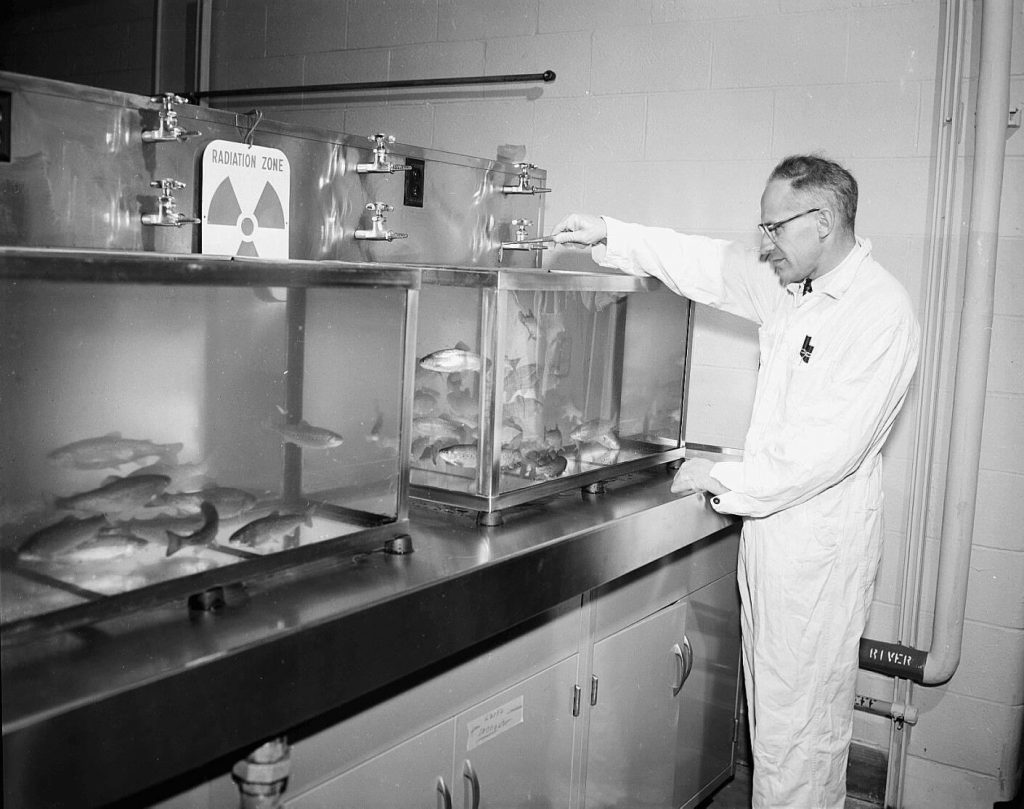
The aquatic research at Hanford was carried out in great secrecy. In working to create the fisheries lab and hire scientists for the program, the Office of Research and Development (OSRD) and Matthias consistently sought to disguise the link to Hanford. In August 1943, the MED hired ichthyologist Dr. Lauren Donaldson of the University of Washington to direct the fish project. Later, in early 1945, the MED hired a second ichthyologist, Richard L. Foster, to assist Dr. Donaldson on the project.
In June, Donaldson and Foster stocked their 100F-Area tanks with trout and kept them in concentrations of effluent water varying from 100 percent effluent (as it entered the river) to 1 part effluent in 2,000 parts river water. Scientists calculated that dilution of 1 part effluent to 500 parts river water would represent the average concentration of area effluent water in the river throughout the year. Additionally, Foster began to monitor respiration and reproductive rates, fungus formation, general activity level, and the healthiness of various fish tissues. It did not take long for scientists to observe the consequences of radioactive contamination. Fish, both in Foster’s experimental tanks and those taken directly from the river, evidenced disease and rising radioactivity levels in their tissues. In addition, a number of external parasites and a bacterial epidemic spread through the test troughs, killing many of the fish.
Scientists continued to study the effects of effluent water on fish through 1946, where a series of even more startling discoveries were made. The researchers found that the radioactivity of the effluent from the pile mixed with the river water became concentrated at much higher levels in fish bodies than in the water itself. This finding would ultimately lead to the principle of biomagnification, the process where as certain substances travel up the food chain, they become more concentrated. In addition, researchers found that nearly 99 percent of young salmon raised in straight effluent water from the Hanford reactors at the site’s fisheries died.
Though the fish program at Hanford produced some important findings, much of these were kept classified until later years. Additionally, Donaldson and Foster stood by the program for decades afterwards and downplayed any potentially harmful information that happened to be exposed.





